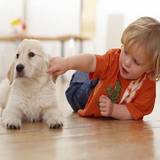Shop
01968
https://www.under5s.co.nz/shop/Hot+Topics+Articles/Health+%26+Wellbeing/Preschoolers/Common+eye+problems+affecting+young+kids.html
Common eye problems affecting young kids
|
Most kids suffer eye problems at some stage or other, it comes with the territory. But are you prepared? Here’s what you need to know about the most common problems affecting toddlers and preschoolers.
|
You might also be interested in ...
Are your kids getting enough Vitamin D?
How do you know if your kids are getting enough vitamin D or if they're deficient in anyway? We look at the importance of vitamin D, common sources and how to ensure your kids get enough vitamin D on a daily basis.
Kids pet allergies
How do you know if your kids have pet allergies? We take a look at what signs you need to look out for, dealing with pet allergies, testing for pet allergens and common culprits. Plus we share some helpful tips on living with your family pet and ideas on what to do if allergy symptoms persist.
join usJoin us on social media for all our latest news. |
sign upSign up and receive our latest newsletters. |
|







Most young kids suffer eye problems at some stage or other, it comes with the territory. But are you prepared?
6 Common eye problems affecting young kids
1. Conjunctivitis
Conjunctivitis is probably the eye infection you’ll be most familiar with. It is an inflammation of the conjunctiva, the transparent membrane that covers the white part of the eyeball and the inner surfaces of the eyelids.
Infective conjunctivitis, caused by a virus or bacteria, is very common in children. Eyes will appear red and watery and you’ll notice a sticky coating on the eyelashes.
If your little one’s eyes are a little bit sticky and red, clean the stickiness gently with cooled boiled water and cotton wool for the first day.
If they’re still stuck down on the following day then contact your GP in case you need to get antibiotics.
You should also go to the doctor if their eyelids are swollen or if their eyes are bright red rather than pink.
2. Squint
A squint is a condition where one eye turns inwards, outwards, upwards or downwards while the other looks forward.
Squints are very common, affecting about one in 20 children and usually develop during the first three years. The most common squint is when the eye turns in.
Take your little one to your GP or optician so that they can check whether your child’s vision is the same in both eyes.
If not, and your little one has developed a lazy eye (where one eye closes slightly, also known as amblyopia), then this needs to be corrected by using either an eye patch or drops.
3. Styes & chalazions
Styes and chalazions may appear similar on first glance, but need to be treated differently.
A stye develops as a result of an infected eyelash follicle and appears as a redness or pimple at the base of the lash. A chalazion on the other hand is a cyst on the eyelid caused by a blocked gland.
A chalazion needs antibiotics for it to clear up and a stye will usually go on its own if you treat it with a warm compress or pull the lash out.
4. Twitches
There are 2 main reasons why a child’s eyes might twitch. It could be that their eyes are dry and they’re trying to squeeze more tears out or it could be that they have an allergic eye disease or reaction such as hay fever.
With dry eyes, the inflammation of the lids is treated and the eyes lubricated. An allergic eye disease can also be treated with drops.
Your GP or local pharmacy will be able to provide you with more information and offer suitable products to resolve the issue.
5. Eye injuries
Toddlers and preschoolers are always running around which can also mean lots of injuries.
Common complaints include scratching their cornea or getting a foreign body stuck under their eyelid.
More serious injuries include something, such as grit, penetrating the eye. If this happens, you’ll notice that the shape of the pupil has changed. Try to flush the object out with warm water if you can before seeking medical advice.
Kids can also do damage to the orbit (fat tissue surrounding the eyeball) of the eye if, for example, a ball hits them hard. In this case, the eye will look sunken or won’t move properly.
Contact your GP or go straight to A&E if you’re at all worried about any injury.
6. Eyesight
If you are concerned about your little one's eyesight, there are 2 quick tests you can do at home before contacting an eye specialist:
Test 1
Test 2
Your little one’s vision will also be an ongoing discussion at their various Well Child checks before they turn 4.
Once they reach 4 years old they will have one final check before they go to school, called the B4 School Check where their vision is tested again and they are screened for lazy-eye (amblyopia).
If you have any concerns at all about your child’s vision make an appointment for them to be assessed at your local hospital or by an optometrist or by a private ophthalmologist (eye-doctor).
They will be able to carry out vision checks on your little one and advise if they will need to be fitted for glasses or require further treatment.
If your child has a vision problem, finding it early will be good for their learning and development in the long run.
Tell your friends
Like the article you've just been reading? Click on the Refer A Friend link at the top of the page and send the details to friends who might like to read it too.More Hot Topics for you to enjoy
- Flat head syndrome
- Childhood apraxia of speech
- Reducing the risk of SIDS
Image source: uncommongood.com